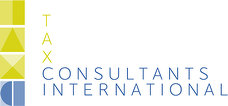Payroll & HR services Global Mobility Services International labor and cross border assignments Payroll & HR Tax compliance
Dutch wage tax is withheld from the taxable salary of the employee. The withholding is based on the wage tax tables. Every year, and sometimes even twice, the Dutch tax office publishes new wage tax tables from which the exact amount of payroll tax to be withheld can be determined, given a certain amount of salary and parameters applying to the employment and the employee.
In the withholding law, a distinction is made between five groups of employees:
- Employees who are residents of the Netherlands;
- Employees who are residents of Belgium;
- Employees who are residents of another EU country, Norway, Liechtenstein, Iceland, Switzerland, or one of the BES islands;
- Employees who are residents of Suriname or Aruba; and
- Employees who are residents of a third country do not fall under the previous groups.
Dutch residents
For Dutch residents, the following tables are provided:
The “white” tables for wages from current employment, where a distinction is made between wage periods (day, week, four weeks, month, or quarter). A table applies to non-periodical remuneration (like bonuses or severance payments).
Similar tables are provided for income from previous employment (the so-called “green” tables). Tables for non-periodical income from certain insurance benefits related to old age, the decease of a partner, and (AOW, ANW, and AIO) benefits exist.
The withholding depends on the applicable Dutch income tax rates and the rates of the Dutch social security premiums due. In particular, the latter can vary, depending on the age and the scope of the social security coverage.
For an overview of current rates of the Dutch income tax and national social security contributions, please consult our publication https://www.tax-consultants-international.com/publications/dutch-tax-rates-for-individuals/dutch-tax-rates-2024-individuals.
Since the Dutch income tax rates are progressive, they cannot just be applied to the cumulative salary during the year. The withholding tables assume income to be evenly earned through the specified periods to base the effective withholding rate on the effective tax rate over the total income earned during the entire year.
Tax credits
In the withholding tables, certain standard tax credits are taken into account, which can include:
- The general tax credit (algemene heffingskorting);
- The employed person's tax credit (arbeidskorting);
- The elderly person's tax credit (ouderenkorting);
- The single elderly person's tax credit (alleenstaande-ouderenkorting);
- The young disabled rebate (jonggehandicaptenkorting).
Every employee meeting the conditions is entitled to the application of the payroll tax credits. The employee must request the employer for the payroll tax credits to be applied. For example, this can be done with the “Wage tax statement” which the employee must return at the start of employment.
An exception applies to the young disabled person tax credit; even if the employee does not receive the payroll tax credit, the employer may consider the young disabled person credit.
If the employee did not request the employer to consider the payroll tax credits, the employee can still apply for these credits in the Dutch income tax return.


.png)




